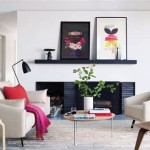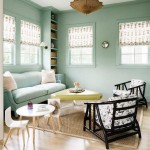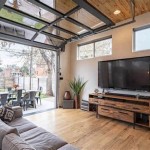Textured Rugs For Living Room: Adding Depth and Character to Your Space
Textured rugs offer a versatile and effective way to elevate the aesthetic and comfort of a living room. Beyond merely covering the floor, these rugs introduce a tactile element that can significantly impact the overall ambiance. The variations in texture, pile height, and materials provide a broad spectrum of options for homeowners seeking to enhance their interior design.
The selection of a textured rug for a living room requires careful consideration of several factors, including the room's existing décor, the intended function of the rug, and the desired level of maintenance. Different textures evoke different feelings and complement various design styles. A plush, high-pile rug might create a sense of luxury and warmth, while a low-pile, intricately woven rug could project a more sophisticated and modern feel.
Understanding the Appeal of Textured Rugs
The primary appeal of textured rugs lies in their ability to add visual interest and depth to a space. A flat, uniform surface can sometimes appear bland and uninviting. A textured rug breaks up this monotony, creating a dynamic and engaging focal point. This is achieved through the interplay of light and shadow across the rug's surface, highlighting the variations in its construction.
Furthermore, textured rugs contribute significantly to the comfort of a living room. The tactile sensation underfoot can be particularly appealing, providing a soft and welcoming surface for relaxation. This is especially important in living rooms, where people often spend extended periods of time lounging, entertaining, or simply unwinding.
Beyond aesthetics and comfort, textured rugs can also serve practical purposes. They can help to define different zones within a living room, anchor furniture arrangements, and even improve acoustics by absorbing sound. This is particularly useful in large, open-plan living spaces where noise can easily reverberate.
Exploring Different Types of Textured Rugs
The market offers a wide array of textured rugs, each with its unique characteristics and suitability for different living room styles. Understanding the various types available is crucial for making an informed decision.
Shag Rugs: These rugs are characterized by their long, dense piles, creating a luxurious and plush feel. Shag rugs are ideal for adding warmth and comfort to a living room, particularly in colder climates. However, they require more frequent maintenance due to their tendency to trap dirt and debris. The long fibers can also pose a challenge for cleaning.
High-Pile Rugs: Similar to shag rugs but with slightly shorter piles, high-pile rugs offer a balance between comfort and practicality. They provide a soft and inviting surface while being easier to clean than shag rugs. High-pile rugs are a good choice for living rooms that see moderate traffic.
Low-Pile Rugs: These rugs have a short, tightly woven construction, making them durable and easy to maintain. Low-pile rugs are well-suited for high-traffic areas and are resistant to staining and wear. They are also a good option for households with pets or young children. While not as plush as high-pile rugs, low-pile rugs can still offer visual interest through intricate patterns and textures.
Braided Rugs: Braided rugs are created by interweaving strands of fabric, yarn, or other materials. This construction method results in a distinctive texture and a rustic, homespun aesthetic. Braided rugs are durable and reversible, offering extended use. They are a good choice for creating a cozy and inviting atmosphere in a living room.
Knotted Rugs: These rugs are meticulously crafted by hand, with each knot contributing to the overall pattern and texture. Knotted rugs are often made from wool or silk and are known for their intricate designs and durability. They are a significant investment but can add a touch of elegance and sophistication to a living room. The texture can range from relatively flat to quite plush, depending on the tightness of the knots and the pile height.
Sculpted Rugs: Sculpted rugs feature variations in pile height to create a three-dimensional effect. This technique allows for the creation of intricate patterns and designs that stand out from the rug's surface. Sculpted rugs are a good choice for adding visual interest and a touch of artistry to a living room.
Cut and Loop Pile Rugs: These rugs combine cut pile and loop pile fibers to create a textured surface. The cut pile fibers provide a soft and plush feel, while the loop pile fibers add durability and visual interest. Cut and loop pile rugs are a versatile option for various living room styles.
Selecting the Right Material for Your Textured Rug
The material of a textured rug plays a significant role in its appearance, durability, and maintenance requirements. Different materials offer different levels of softness, stain resistance, and overall longevity. The choice of material should be based on the specific needs and lifestyle of the homeowner.
Wool: Wool is a popular choice for textured rugs due to its natural softness, durability, and stain resistance. Wool rugs are also known for their ability to regulate temperature, keeping a living room warm in the winter and cool in the summer. However, wool rugs can be more expensive than synthetic options and may require professional cleaning.
Synthetic Fibers: Synthetic fibers, such as nylon, polyester, and polypropylene, offer a more affordable alternative to wool. Synthetic rugs are generally stain-resistant, easy to clean, and resistant to fading. They are a good choice for high-traffic areas and households with pets or young children. However, synthetic rugs may not be as soft or luxurious as wool rugs.
Cotton: Cotton rugs are soft, lightweight, and absorbent. They are a good choice for casual living rooms and are often less expensive than wool rugs. However, cotton rugs are more prone to staining and fading than wool or synthetic rugs and may require more frequent cleaning.
Sisal and Jute: Sisal and jute are natural fibers that create a textured, rustic look. These rugs are durable and environmentally friendly but can be rougher to the touch than other materials. Sisal and jute rugs are a good choice for adding a natural element to a living room.
Silk: Silk rugs are known for their luxurious feel and lustrous appearance. They are often used in formal living rooms and can add a touch of elegance and sophistication to a space. However, silk rugs are delicate and require professional cleaning to maintain their beauty.
Integrating Textured Rugs into Your Living Room Décor
The successful integration of a textured rug into a living room's décor requires careful consideration of several design principles. The rug should complement the existing color scheme, furniture style, and overall ambiance of the room.
Color Coordination: The color of the rug should either complement or contrast with the existing color palette of the living room. A rug with neutral colors, such as beige, gray, or ivory, can blend seamlessly with a variety of décor styles. A rug with bold colors or patterns can serve as a focal point and add a pop of visual interest.
Size and Placement: The size of the rug should be proportionate to the size of the living room. A rug that is too small can appear insignificant, while a rug that is too large can overwhelm the space. The placement of the rug should also be carefully considered. In general, the rug should extend at least partially under the front legs of the sofas and chairs to create a cohesive and anchored furniture arrangement.
Style Compatibility: The style of the rug should be compatible with the overall style of the living room. A shag rug might be a good choice for a bohemian or eclectic living room, while a knotted rug might be more appropriate for a traditional or formal living room. A low-pile, geometric-patterned rug could be well-suited to a modern or contemporary space.
Layering: Layering rugs is a technique that involves placing a smaller, textured rug on top of a larger, neutral rug. This can add visual interest and depth to a living room. For example, a small shag rug could be layered on top of a larger sisal rug to create a cozy and inviting seating area.
Maintenance Considerations: The maintenance requirements of a textured rug should be taken into account when making a selection. Shag rugs and high-pile rugs require more frequent vacuuming and professional cleaning than low-pile rugs. The material of the rug will also affect its stain resistance and cleaning requirements. Selecting a rug that is easy to maintain will help to ensure its longevity and beauty.
By carefully considering these factors, homeowners can select a textured rug that enhances the aesthetic appeal, comfort, and functionality of their living room. The right rug can transform a living room from a simply functional space into a stylish and inviting haven.

Cozy Textured Rugs Warm Inviting Styles Kathy Kuo Home

Textile Trends A Guide To Textured Rugs City Home

Nuloom Rebecca High Low Textured Shaggy Gray 4 Ft X 6 Area Rug Oztt01a 406

Homerry 9 X 12 Area Rug For Living Room Washable Bedroom Modern Solid Jacquard Textured Carpet Floor Decoration Gray

Nourison Textured Home Ivory Beige 4 Ft X 6 Solid Geometric Contemporary Area Rug 922694

Boutique Rugs Ampusungan Farmhouse High Low Textured Shag Area Rug Boho Moroccan Geometric Carpet For Living Room Bedroom Charcoal Cream Peach

Dowell Textured Luxe Area Rug

Haperlare Washable Area Rug Modern For Living Room Contemporary Solid Textured Indoor Carpet Foldable Boho Non Slip Accent Throw Carpe 9

Hauteloom Broadway Collection Living Room Area Rug Moroccan Trellis Farmhouse High Low Fringe Carpet White Cream 7 10 X

5 X7 Printed Area Rug Realistic Braided Look Textured Rugs Machine Washable Non Slip Indoor Carpet For Living Room Bedroom








